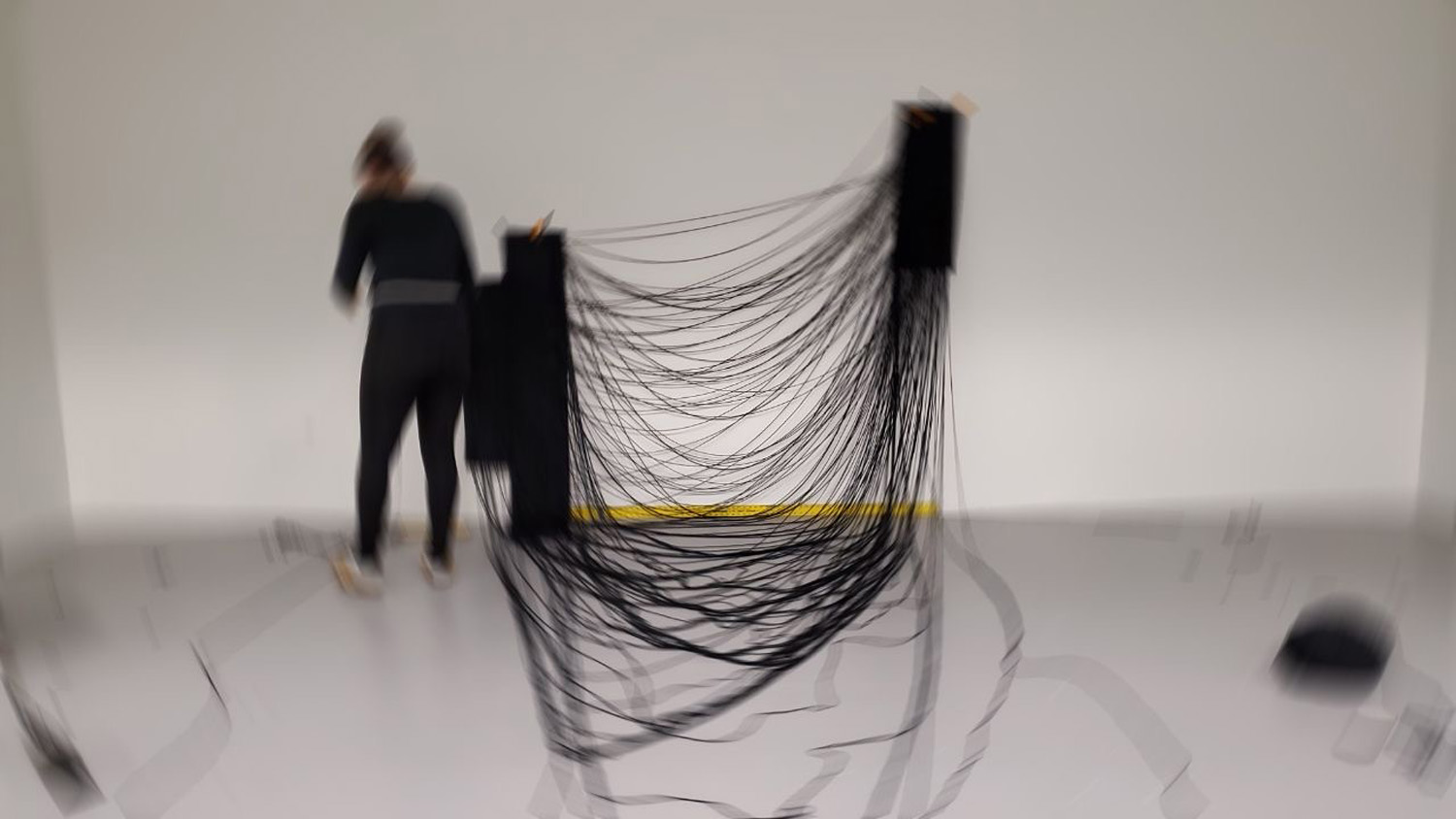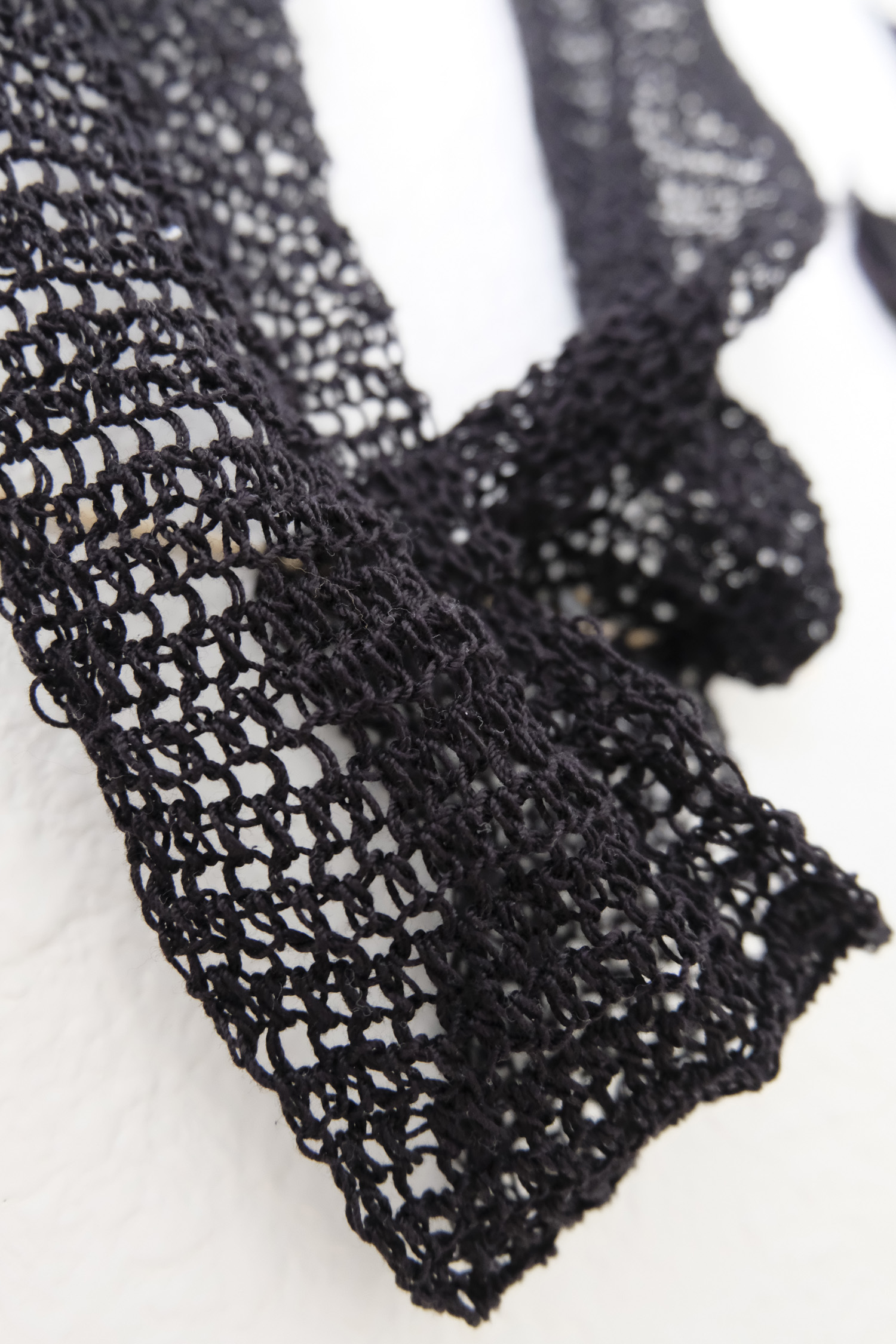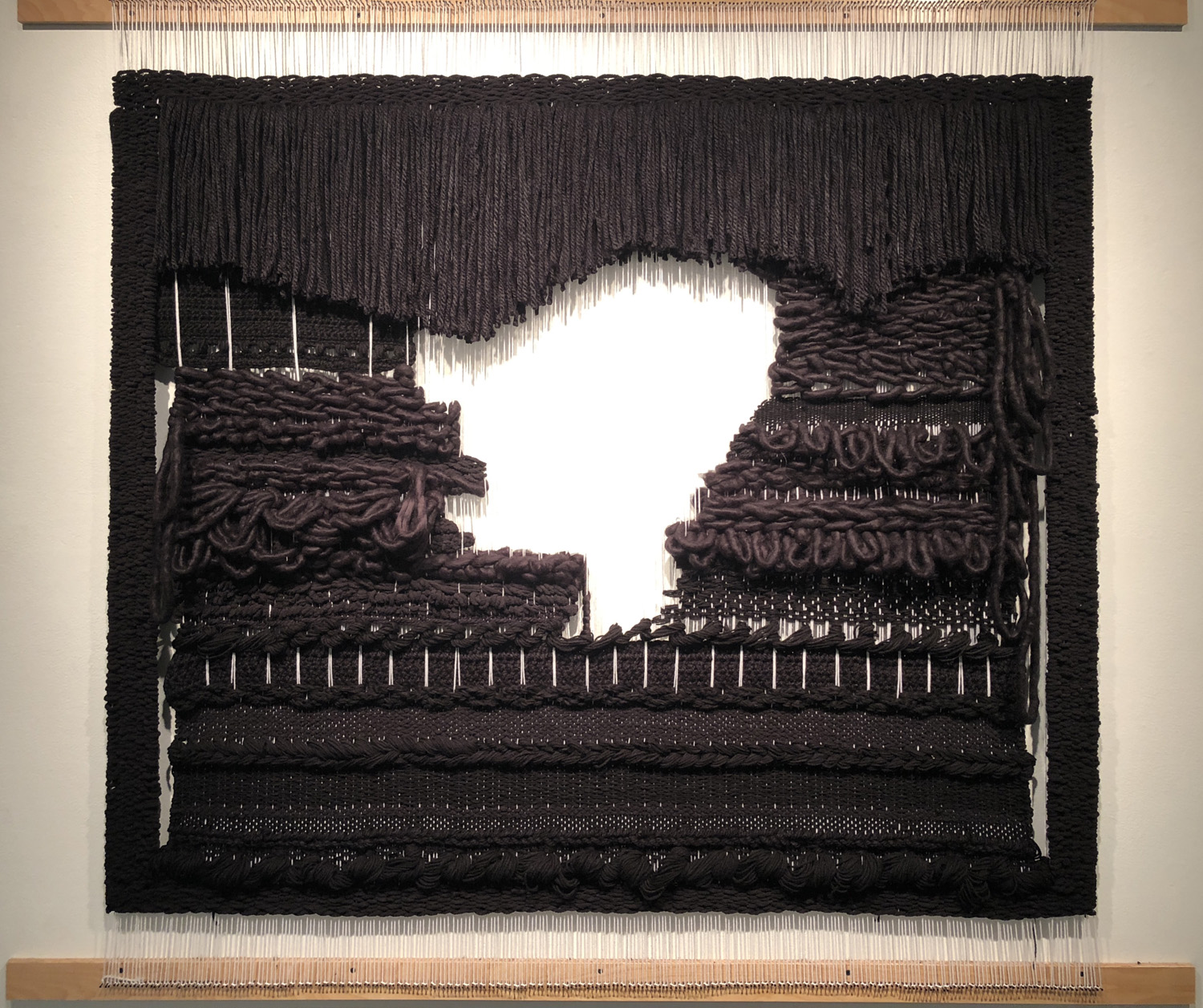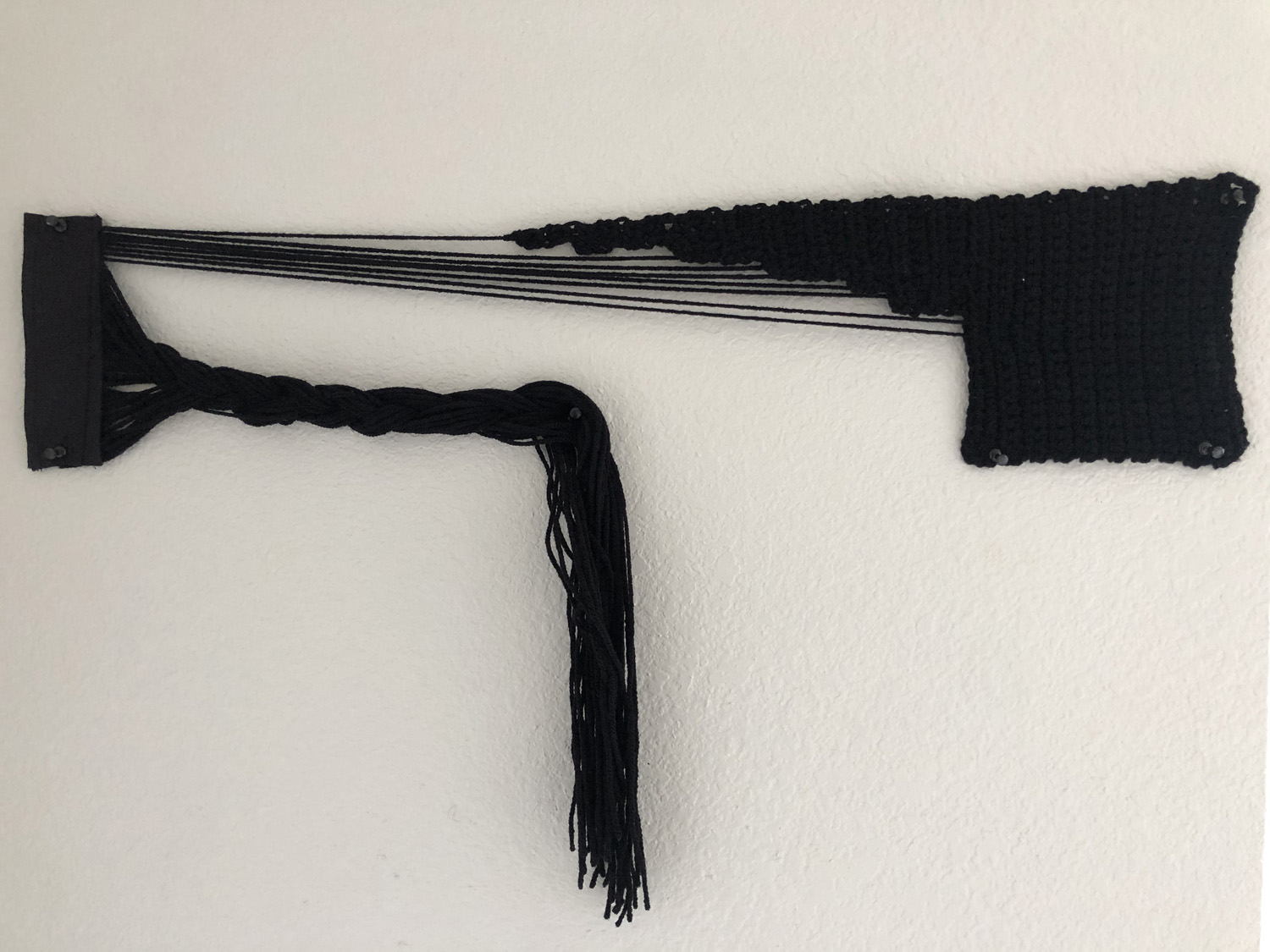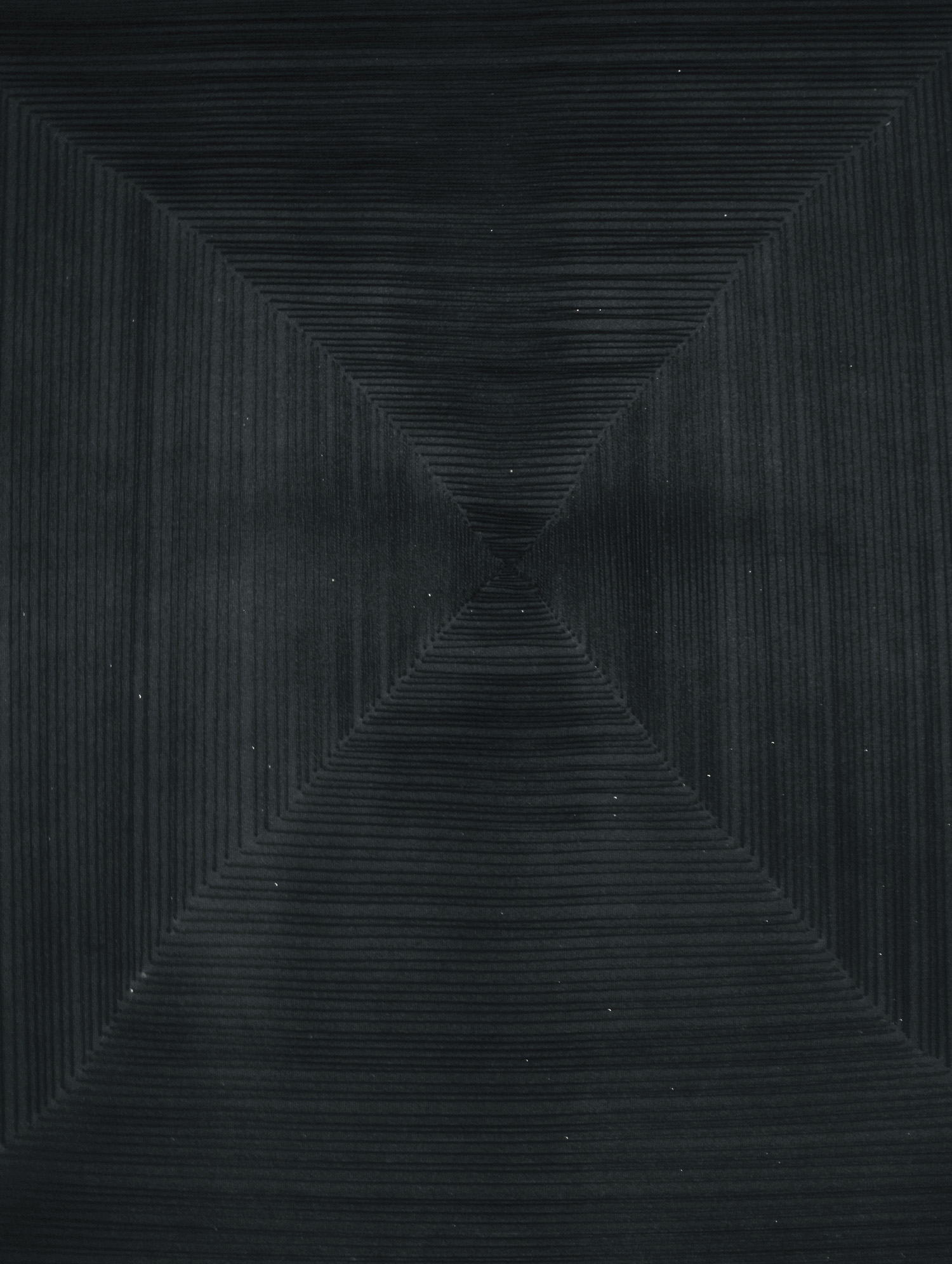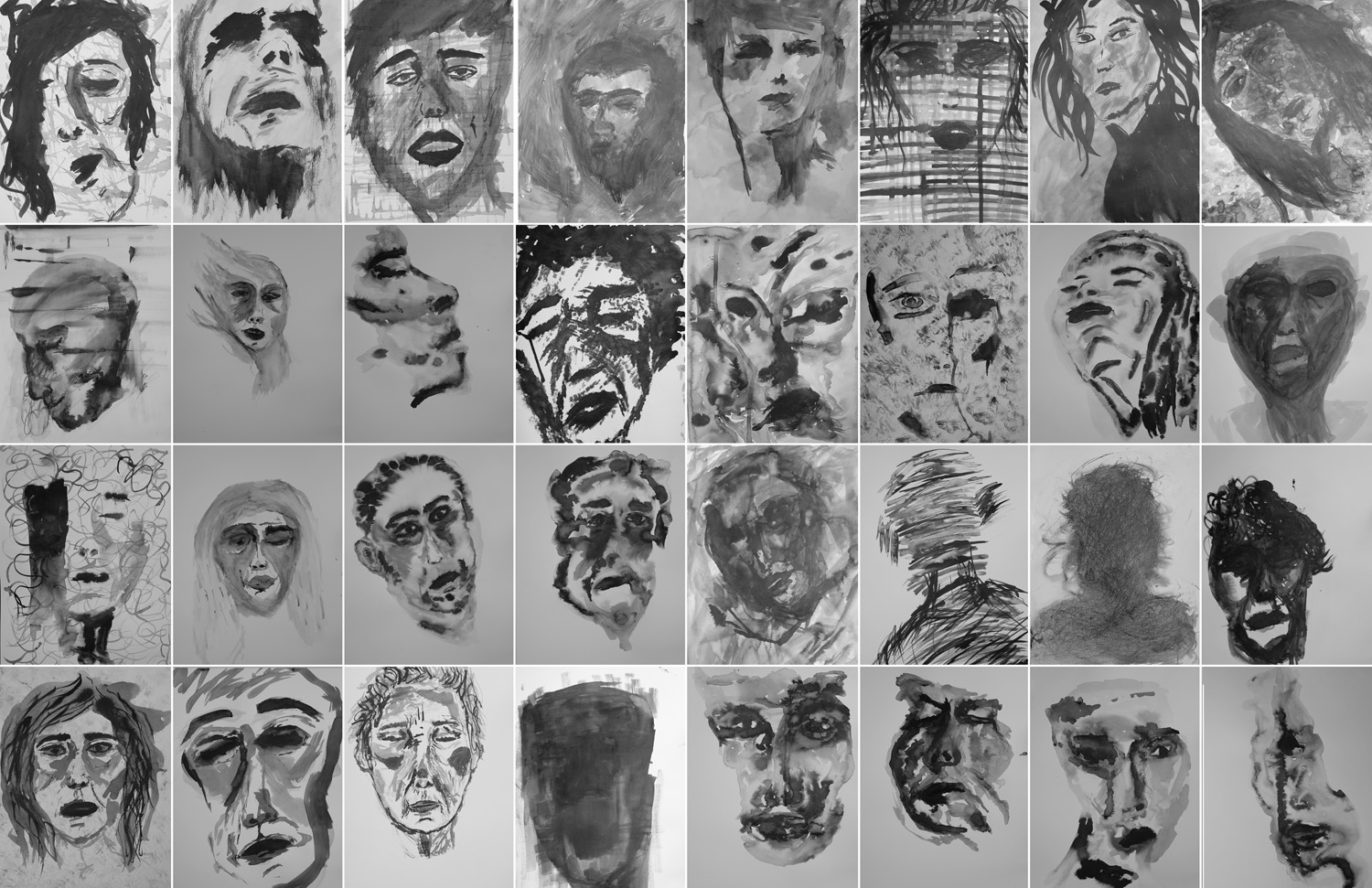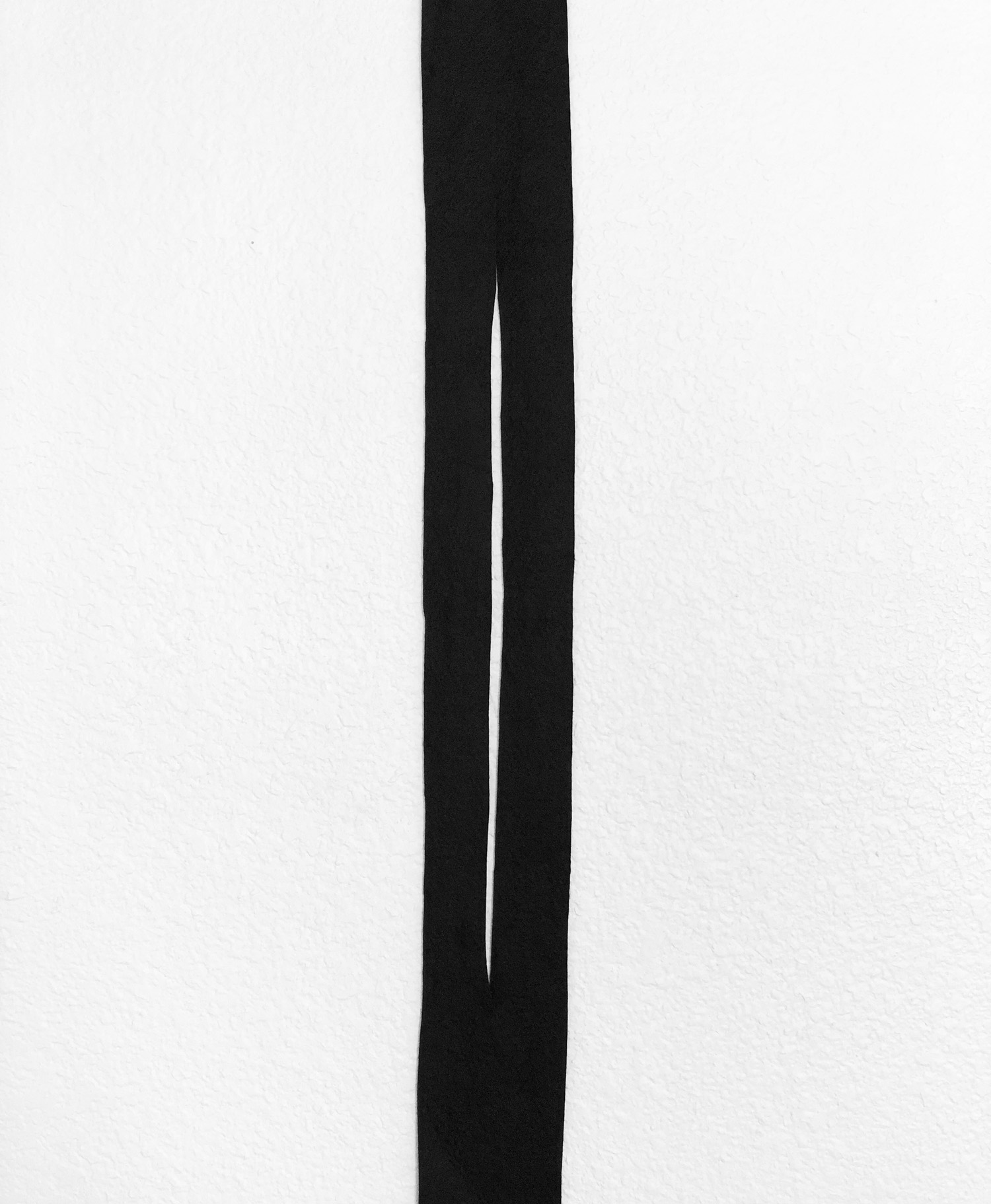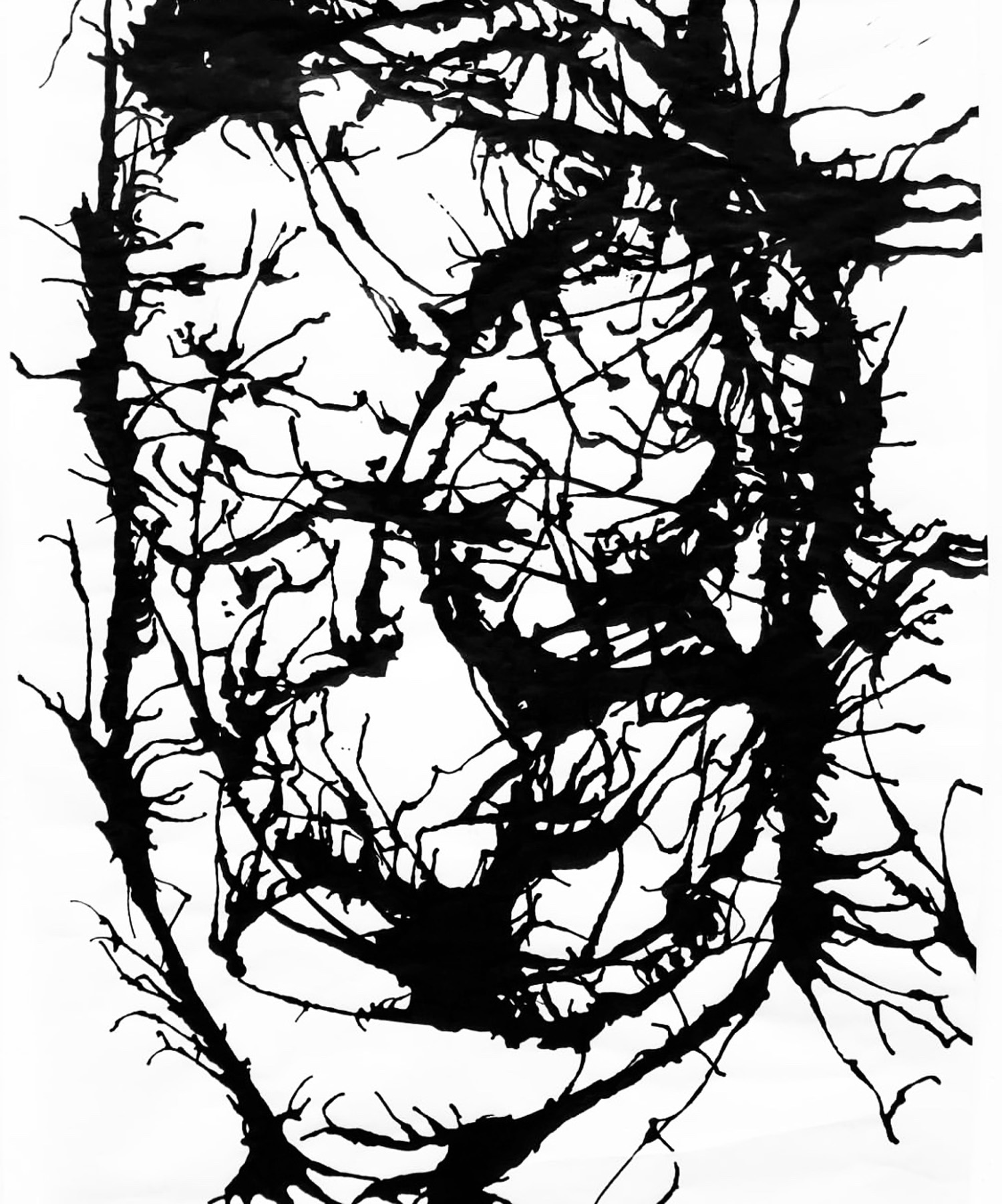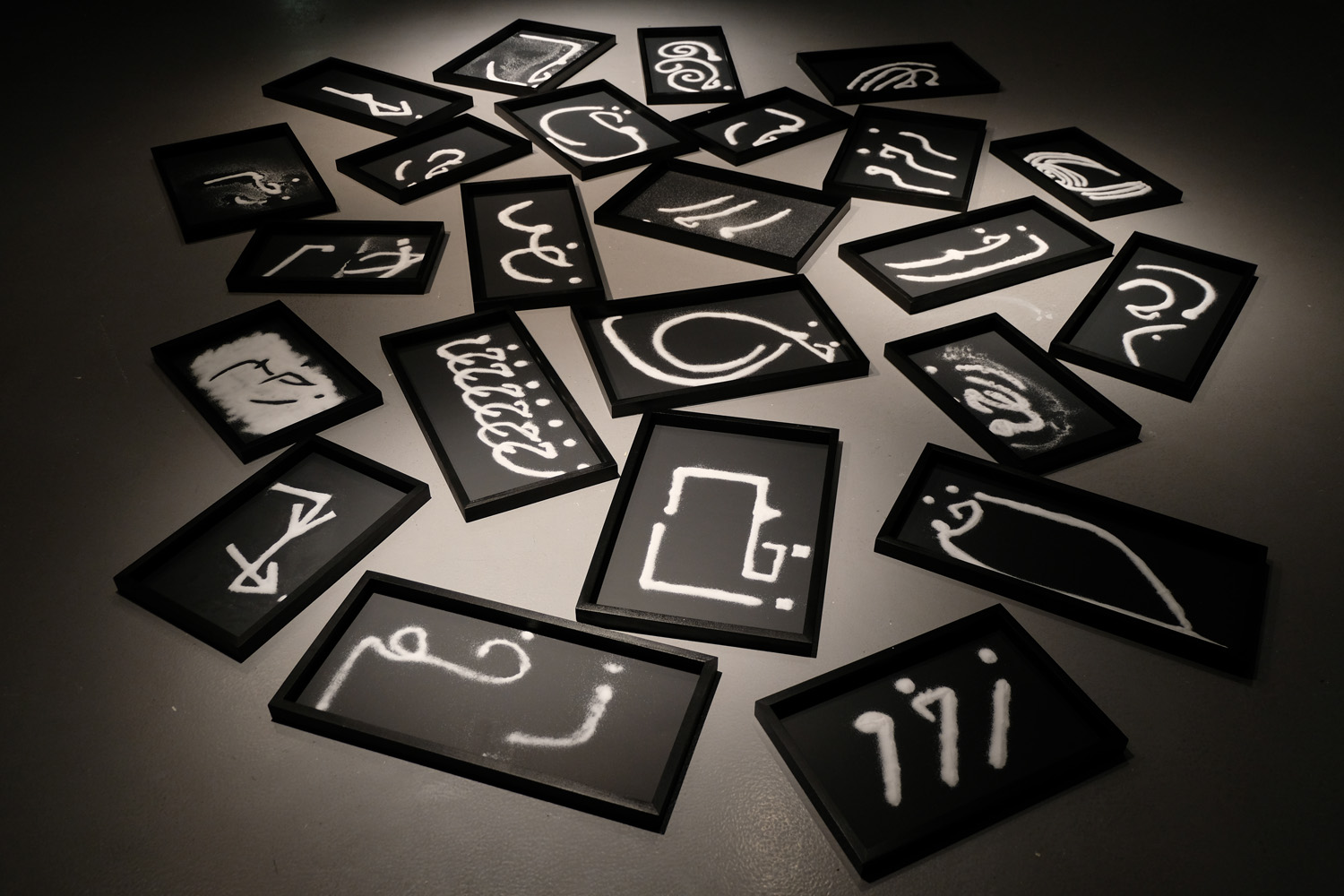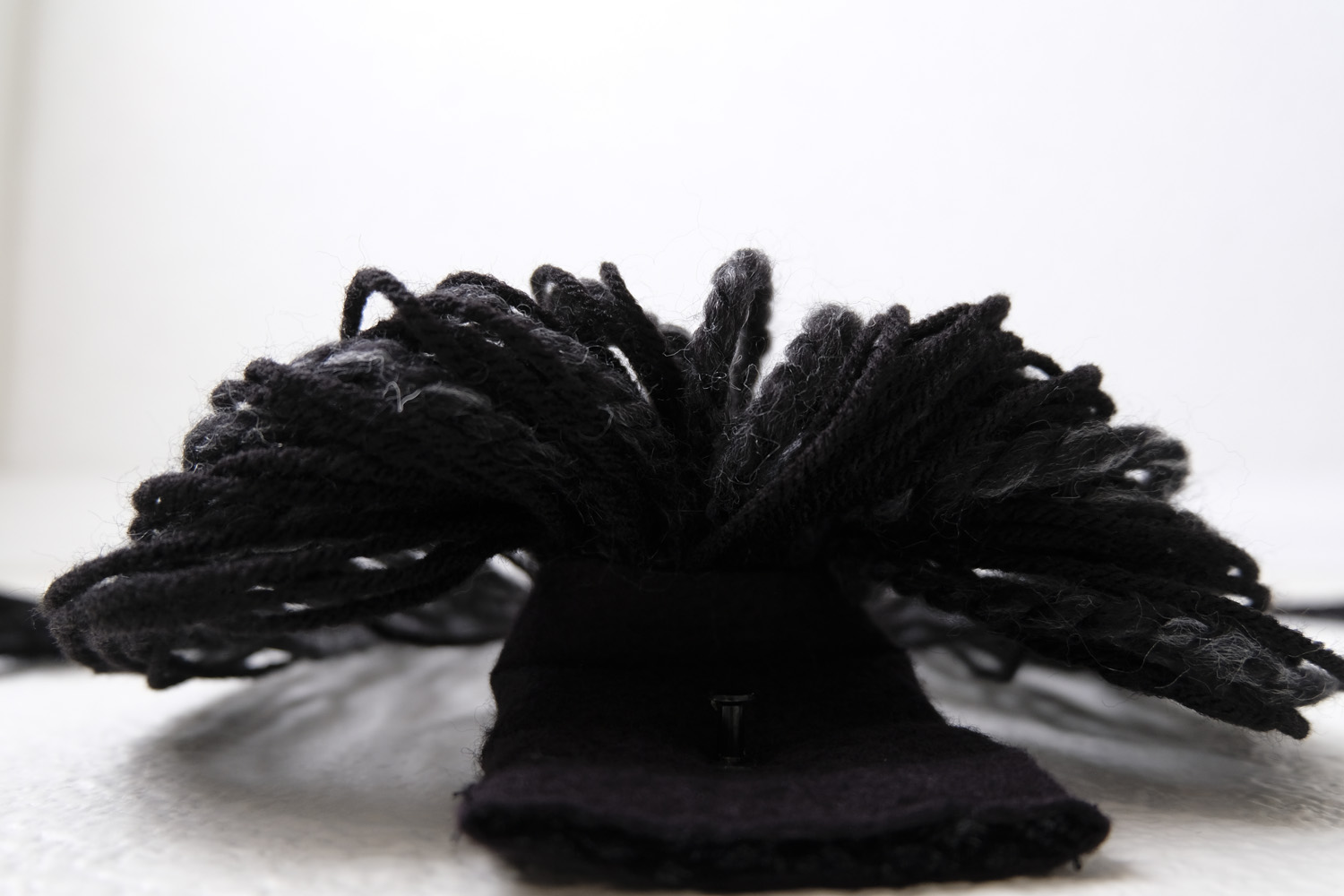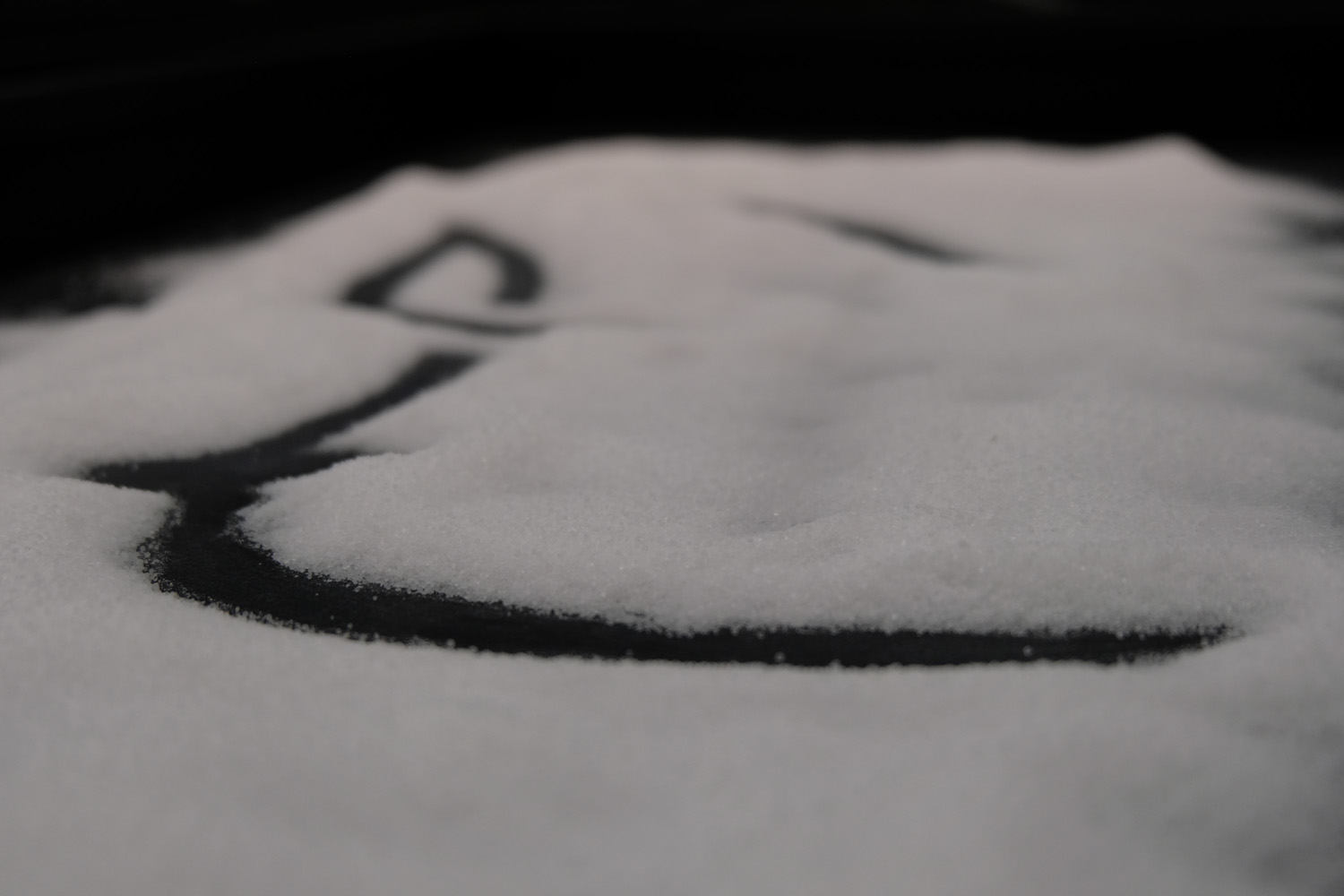Elnaz Talaei intertwines the politics of relationships and communication in her fiber-based, monochromatic installations. Growing up in Iran, Elnaz watched her mother work with thread and fabric as a dressmaker. After seven consecutive years in the United States, Elnaz uses these materials to investigate the threads that still lead to her family in Tehran. Fibers entangle en route from one anchor to the next, but they always reach the other side. The installations comment on the complicated nature of long-distance: the space and time that stretches between two entities.
The repetitive motion of creation—stitching, mark-making, and interweaving with ink and thread—is meditative. Viewing Elnaz’s work is equally so. Her black panels are deep voids, inviting viewers to sink in. Threading is subtly and profoundly intriguing from across the room, and from a distance, darkness swallows all detail. By closing that distance, geometric patterns emerge and reveal depth previously obscured by the solid black field. The works defy white space waiting to be filled. This dark void is already dense. But the material is porous; there is always room for the viewer to add memories and personal experiences to its depths. Elnaz sees these objects as communicative and open for individual interpretation. Like the Persian poetry that inspires her work, Elnaz ensures these works do not dictate a singular narrative.
Elnaz’s work is intensely affected by the place in which it is situated. The artist uses the exhibition space to explore, and the works are largely created on-site. The place itself has an effect, a mood to contribute. The resulting installations are unique and individually designed for their place. To Elnaz, the materials play their own roles. The works pierce the viewer’s personal space with their sheer size, engulfing bodies in the installation environment. Active engagement is required—moving in this space reveals the subtle but complex network Elnaz has exposed. Untangling individual threads with the eye is impossible; instead, the works reveal and accept the nature of convolution. The line of communication is opened: between Elnaz, the artwork, the viewer, and the complicated relationships that exist amongst all.
Emily Lawhead
Ph.D. Graduate Student, History of Art & Architecture
